The Passover lamb holds profound historical and spiritual significance, symbolizing redemption and deliverance. The instructions outline selecting, preparing, and consuming the lamb, emphasizing purity and obedience to divine commands.
1.1 Historical Significance of the Passover Lamb
The Passover lamb traces its origins to the Exodus, where it symbolized divine protection and deliverance. The lamb’s blood, applied to doorposts, spared the Israelites from the final plague, marking a pivotal moment in their liberation from Egypt. This act of faith and obedience became a cornerstone of Jewish identity, commemorating God’s redemption and the people’s freedom, with the lamb serving as a enduring symbol of salvation and divine intervention.
1.2 Spiritual Symbolism of the Lamb in Passover
The Passover lamb embodies profound spiritual symbolism, representing purity, redemption, and divine sacrifice. Its spotless nature mirrors the need for moral integrity and faith. The lamb’s blood, a symbol of protection and salvation, signifies God’s mercy and the atonement of sins. In Jewish tradition, it underscores liberation from oppression, while in Christian theology, it prefigures Jesus as the “Lamb of God,” embodying ultimate sacrifice and spiritual deliverance for humanity.
The Biblical Account of the Passover Lamb
The Passover lamb is central to the Exodus story, as God instructed Moses to select and sacrifice it, marking homes with its blood to spare the firstborn from death.
2.1 The Instructions Given to Moses and Aaron
God spoke to Moses and Aaron, designating the first month as the beginning of months. They were commanded to instruct the Israelites to select a lamb on the tenth day, ensuring each household had one. The lamb was to be without blemish, a year-old male, taken from sheep or goats. It was to be kept until the fourteenth day, when it would be sacrificed.
2;2 The Role of the Lamb in the Exodus Story
The Passover lamb played a central role in the Exodus, as its blood marked doorposts, sparing Israelite firstborns from the tenth plague. The lamb’s sacrifice symbolized divine deliverance, protecting the people from death. This act of obedience to God’s command solidified the lamb’s significance as a symbol of redemption and mercy, marking the Israelites’ liberation from Egyptian bondage.
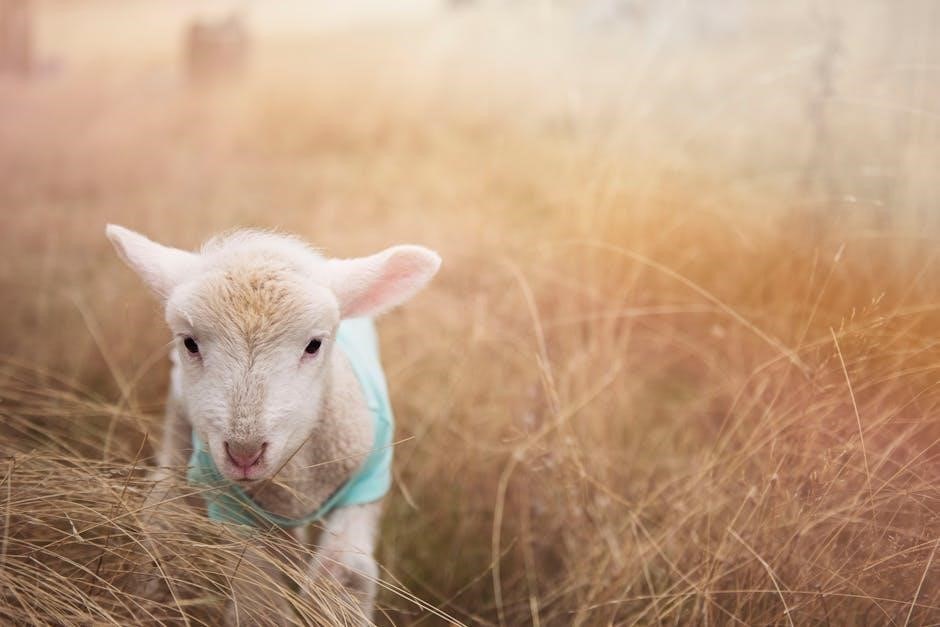
Selecting the Passover Lamb
The lamb must be a year-old male without blemish, chosen from sheep or goats, reflecting divine requirements for purity and perfection in the sacrifice.
3.1 Criteria for Choosing the Lamb
The lamb must be a year-old male, chosen from sheep or goats, and flawless without blemishes. It was selected on the tenth day of Nisan, inspected for purity, and kept until the fourteenth day. This process emphasized divine requirements for perfection, ensuring the lamb symbolized redemption and purity in the Exodus story.
3.2 The Lamb as a Symbol of Perfection and Purity
The lamb symbolizes perfection and purity, as it must be flawless and without blemish, reflecting spiritual and moral purity. This requirement mirrors the need for moral integrity and divine acceptance. The lamb’s perfection underscores its role as a sacred offering, embodying purity and redemption, and prefiguring the ultimate sacrifice of Jesus Christ as the “Lamb of God” in Christian theology.

Preparing the Passover Lamb
The lamb must be without blemish, selected and sacrificed according to divine instructions. It is roasted over fire, symbolizing obedience and purification, with no leftovers remaining.
4.1 The Process of Sacrificing the Lamb
The lamb, chosen for its perfection, was sacrificed on the 14th day of the first month in the evening. The Levites sang psalms as each lamb was slaughtered in the name of the commandment, emphasizing spiritual significance. The act symbolized obedience and atonement, fulfilling God’s instructions for the Passover ritual;
4.2 Applying the Blood of the Lamb
The blood of the lamb was applied to the doorposts and lintels using hyssop branches, as instructed by Moses. This act protected the Israelites, ensuring the angel of death passed over their homes. The blood served as a visible sign of obedience and faith, fulfilling God’s command for the Passover. Its application was crucial for the sparing of the firstborn, symbolizing redemption and divine mercy.

Cooking and Eating the Passover Lamb
The lamb was to be roasted over a fire, with no leftovers. It was eaten with unleavened bread and bitter herbs, fulfilling God’s command for remembrance.
5.1 Traditional Methods of Roasting the Lamb
The lamb was traditionally roasted over an open flame, ensuring it was neither boiled nor eaten raw. This method honored God’s command to preserve its integrity. Accompanied by unleavened bread and bitter herbs, the roasted lamb symbolized the haste of the Israelites’ departure from Egypt, fulfilling the divine instructions outlined in Exodus 12:7-8.
5.2 The Importance of Eating the Entire Lamb
Eating the entire lamb ensures obedience to God’s command, symbolizing complete reliance on His deliverance. No part of the lamb was to remain, reflecting the Israelites’ urgency and gratitude. This act emphasized community unity and faith, reinforcing the Passover’s significance as a collective experience of redemption and liberation from bondage.
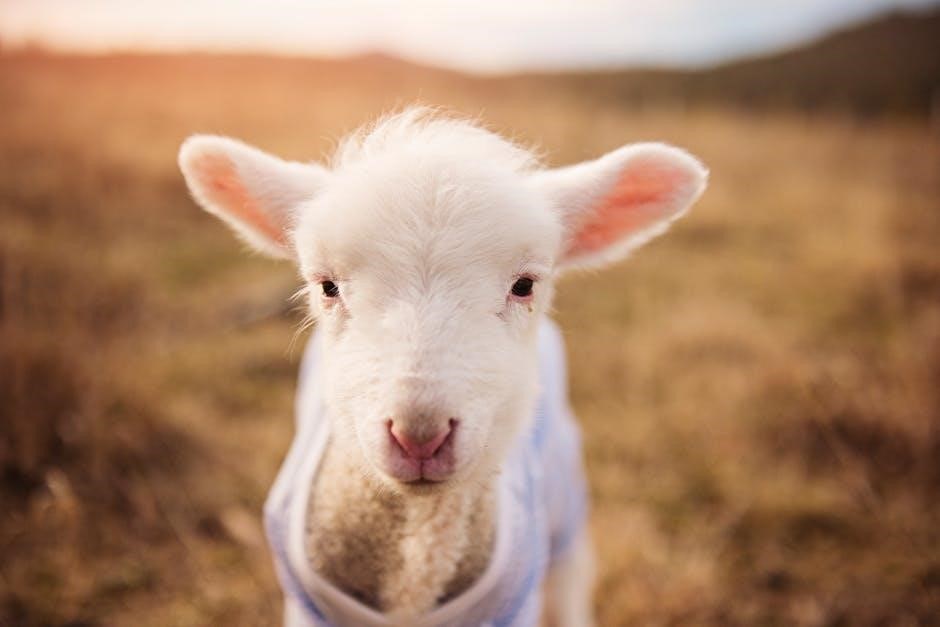
The Passover Lamb in Modern Celebrations
The Passover lamb remains a central symbol in modern celebrations, often represented through the Seder plate. Its presence honors tradition and signifies redemption, connecting generations to the Exodus story.
6.1 Incorporating the Lamb into the Seder Meal
The Passover lamb is symbolically represented in the Seder meal through the shank bone (zeroa) on the Seder plate. Traditionally, the lamb is not eaten but remembered, emphasizing its historical role. Participants recite blessings and narrate the Exodus story, reflecting on the lamb’s sacrifice. The meal includes unleavened bread and bitter herbs, symbolizing the haste of departure and the bitterness of slavery, while the lamb represents redemption and divine deliverance.
6.2 Contemporary Interpretations of the Passover Lamb
The Passover lamb is often viewed as a universal symbol of freedom and sacrifice. In modern times, it represents hope, renewal, and the triumph of light over darkness. Many interpret the lamb as a reminder of divine providence and deliverance, transcending religious boundaries. Its significance is celebrated in various cultural and spiritual contexts, adapting traditional rituals while preserving the essence of its historical and symbolic meaning.

The Lamb as a Representation of Jesus Christ
The Passover lamb symbolizes Jesus, the “Lamb of God,” who sacrificed Himself for humanity’s sins, offering freedom from spiritual bondage and eternal redemption through His atonement.
7.1 Jesus as the “Lamb of God” in Christian Theology
Jesus is hailed as the “Lamb of God” in Christian theology, symbolizing purity and sacrifice. Like the Passover lamb, He was without blemish, offering Himself to atone for humanity’s sins. This connection underscores divine redemption and deliverance, mirroring the Exodus story. His crucifixion aligns with the lamb’s sacrifice, providing salvation and freedom from spiritual bondage, fulfilling the prophetic symbolism of the Passover lamb.
7.2 The Connection Between the Passover Lamb and the Crucifixion
The crucifixion of Jesus aligns with the Passover lamb’s sacrifice, as both represent redemption through blood. John the Baptist called Jesus the “Lamb of God,” linking His death to the Exodus story. The timing of Jesus’ crucifixion coincided with the slaying of Passover lambs, symbolizing His role as the ultimate sacrifice for humanity’s sins, providing spiritual deliverance and freedom from bondage, just as the lamb’s blood protected the Israelites.
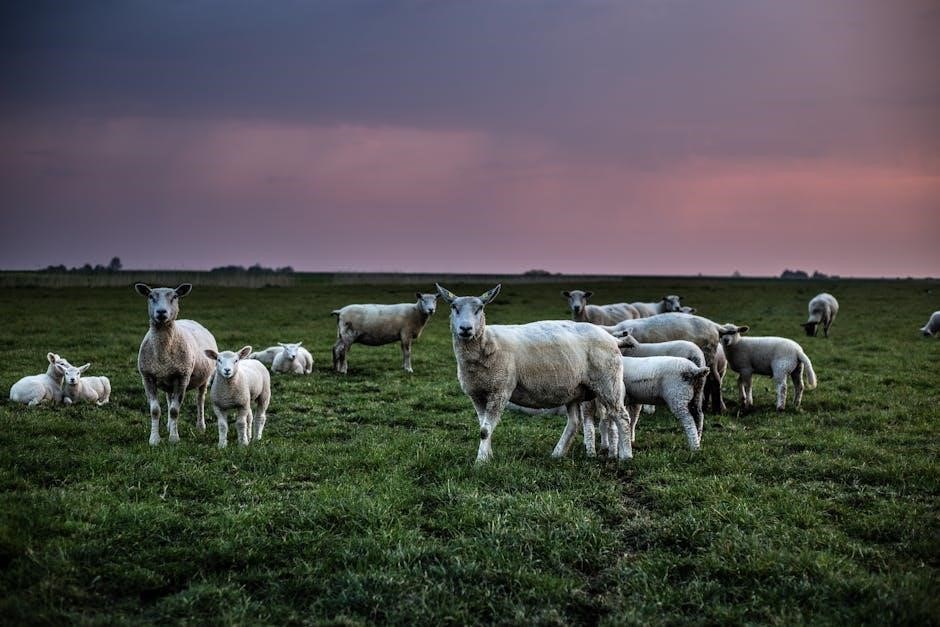
The Role of the Passover Lamb in Jewish Tradition
The Passover lamb symbolizes redemption and deliverance, commemorating the Exodus. It is central to the Seder plate, representing the sacrifice in Egypt and God’s mercy on Israel.
8.1 The Lamb as a Symbol of Redemption
The Passover lamb embodies redemption, marking the Israelites’ liberation from Egypt. Its blood, applied to doorposts, signified divine protection, sparing firstborn sons. This act symbolizes God’s mercy and covenant, reinforcing the lamb’s role as a redeemer in Jewish tradition, commemorated annually during the Seder to honor the Exodus and divine deliverance.
8.2 The Lamb’s Role in the Seder Plate
The Passover lamb is symbolically represented on the Seder plate by the shank bone (zeroa), signifying the sacrifice made during the Exodus. Its presence honors the tradition of roasted lamb eaten during the Seder, though the actual lamb is no longer consumed in modern celebrations. The zeroa serves as a poignant reminder of the lamb’s historical role in the redemption of the Israelites and the Passover story.
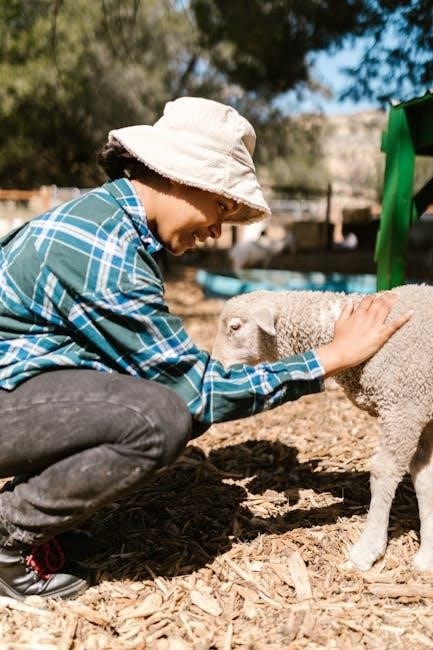
The Spiritual Lessons from the Passover Lamb
The Passover lamb symbolizes freedom and deliverance, reminding us of God’s redemption and the importance of faith in divine intervention. Its sacrifice underscores liberation from oppression.
The lamb also represents sacrifice and atonement, teaching the value of obedience and trust in God’s plan. Its story embodies spiritual renewal and the pursuit of purity.
9.1 The Lamb as a Symbol of Freedom and Deliverance
The Passover lamb symbolizes freedom and deliverance, marking the Israelites’ liberation from Egyptian bondage. Its blood, applied to doorposts, spared lives and signified divine redemption. This act of faith led to their release, embodying God’s power to free His people. The lamb’s sacrifice represents the ultimate deliverance from oppression, both physically and spiritually, highlighting the profound connection between obedience and liberation.
9.2 The Lamb’s Representation of Sacrifice and Atonement
The Passover lamb embodies sacrifice and atonement, its life given to spare the firstborn. The lamb’s blood, a substitute for human life, signifies divine mercy and forgiveness. This act of sacrifice prefigures Jesus, the “Lamb of God,” whose crucifixion atones for humanity’s sins, fulfilling the ultimate purpose of redemption and reconciliation.
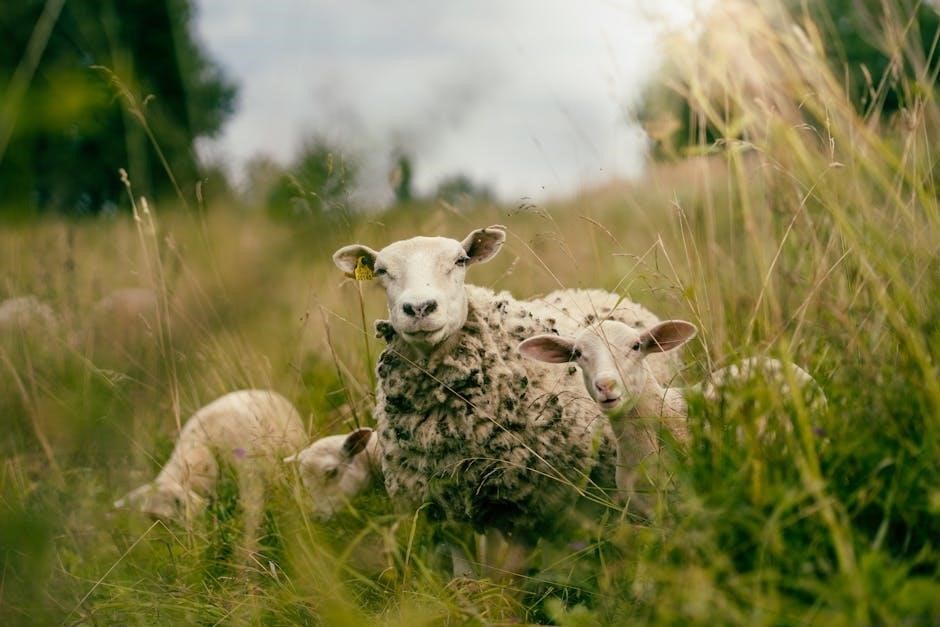
The Passover Lamb in Art and Literature
The Passover lamb is often depicted in religious art as a symbol of sacrifice and redemption. It appears in literature and songs, reinforcing its spiritual significance.
10.1 Depictions of the Lamb in Religious Art
The Passover lamb is often depicted in religious art as a symbol of sacrifice and redemption. It is frequently shown with a cross or a banner, representing Jesus as the Lamb of God. These depictions are common in stained glass, paintings, and sculptures, particularly in churches, where the lamb signifies purity and divine mercy. Such artworks are often displayed prominently during Easter, highlighting the lamb’s connection to resurrection and salvation.
10.2 The Lamb’s Presence in Passover Literature and Songs
The Passover lamb is a central theme in religious literature and songs, symbolizing redemption and divine mercy. Traditional Passover songs, such as those in the Hallel service, highlight the lamb’s role in deliverance. In Christian hymns, the lamb is often linked to Jesus, emphasizing themes of atonement and resurrection. These works reflect the enduring spiritual significance of the Passover lamb across cultures and traditions, resonating deeply with believers worldwide.
The Passover lamb symbolizes redemption, freedom, and divine mercy, its legacy enduring through centuries. Its story transcends cultures, offering universal hope and spiritual renewal to all people;
11.1 The Enduring Legacy of the Passover Lamb
The Passover lamb’s legacy endures as a powerful symbol of redemption and divine deliverance, transcending generations. Its story, rooted in the Exodus, continues to inspire faith and hope globally, connecting communities through its universal message of freedom and salvation, while its annual commemoration ensures its memory remains vibrant and relevant in modern times.
11.2 The Universal Message of the Passover Lamb
The Passover lamb embodies a universal message of freedom, redemption, and divine sacrifice. Its story transcends cultures, symbolizing hope and renewal. The lamb’s selfless offering reminds humanity of the ultimate price paid for salvation, resonating deeply in both Jewish and Christian traditions. This timeless emblem of deliverance unites people in shared reflections of liberation, forgiveness, and the enduring promise of a covenant with God.